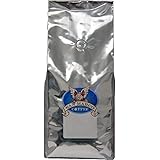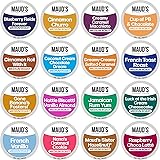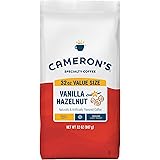Mastering the Art of French Press Coffee: Your Guide to a Perfect Home Brew
Struggling to achieve that rich, full-bodied coffee experience at home? Many home brewers face challenges with inconsistent flavor or sediment in their cup. Thankfully, the French press offers a straightforward path to exceptional coffee, delivering a robust and aromatic brew that’s hard to beat.
In the video above, Jason walks us through the fundamental steps to craft delicious French press coffee right in your kitchen. This timeless immersion brewing method is celebrated for extracting maximum flavor and oils from coffee grounds, resulting in a unique taste profile. Let’s dive deeper into the process and uncover the nuances that elevate a good cup to a great one.
Essential French Press Gear for Superior Brewing
Before you even think about brewing, gathering the right tools is crucial for making French press coffee. While the video highlights the core items, a few additions can significantly enhance your results.
You’ll need a reliable French press device, of course, preferably one with a durable glass carafe or insulated stainless steel for heat retention. A good quality kettle with temperature control is also highly recommended, ensuring precise water heating. Furthermore, a burr grinder is a game-changer for French press, as a consistent coarse grind is paramount.
The Importance of Fresh, Coarse Grounds
The video briefly touches on coffee grounds, but the type and freshness of your coffee are perhaps the most influential factors. For French press, a coarse, uniform grind resembling sea salt is ideal. This specific grind size prevents over-extraction (which leads to bitterness) and minimizes sediment passing through the filter.
Using freshly roasted and freshly ground coffee makes a noticeable difference, too. Coffee beans begin to lose their aromatic compounds shortly after roasting, and ground coffee deteriorates even faster. Studies indicate that grinding coffee just before brewing preserves volatile aromatics, ensuring a more vibrant and flavorful cup. Investing in a quality burr grinder allows you to control the coarseness and ensure consistency, which flat blade grinders often cannot achieve.
The Science of Water Temperature for Optimal Extraction
As Jason demonstrates, heating your water to precisely 200 degrees Fahrenheit is a critical first step for making French press coffee. While some kettles have a “fancy button,” using a thermometer or a variable temperature kettle ensures accuracy. Brewing water that is too hot (above 205°F) can scorch the coffee, resulting in a bitter, harsh taste, as it extracts undesirable compounds too quickly. Conversely, water that is too cool (below 195°F) leads to under-extraction, producing a weak, sour, or flat brew because the flavors haven’t been fully dissolved.
Research suggests that the optimal extraction temperature range for coffee is between 195°F and 205°F. Within this range, the water efficiently dissolves the desirable compounds—sugars, acids, and aromatics—that give coffee its complex flavor profile. Always heat slightly more water than you need for your French press, as some heat will be lost during the transfer. This ensures your final brewing temperature remains stable throughout the immersion process.
Perfecting Your Coffee-to-Water Ratio
Achieving the perfect balance of coffee and water is fundamental to a delicious French press. The general rule provided in the video—one tablespoon of grounds per four ounces of water—is an excellent starting point for consistency. For a typical 32-ounce French press, which Jason uses, this translates to about eight tablespoons of coffee for 32 ounces of water, or four scoops for 16 ounces if you’re filling it halfway.
However, for even greater precision, many coffee enthusiasts prefer to measure by weight. A common recommendation from coffee professionals is a coffee-to-water ratio of 1:15 or 1:16. This means for every 1 gram of coffee, you’d use 15 or 16 grams of water. For instance, if you’re using 25 grams of coffee, you’d add 375-400 grams of water. This method eliminates variability caused by different coffee densities and spoon sizes, leading to a consistently excellent brew every time.
The Crucial Bloom and Steep: Unlocking Flavor
Once your water and grounds are ready, the brewing process truly begins. After pouring the hot water over the coarse coffee grounds, as Jason highlights, the grounds initially collect at the top. This initial saturation period is often referred to as the “bloom.”
The bloom occurs when hot water hits fresh coffee grounds, causing carbon dioxide trapped within the beans to escape. This degassing process is essential for an even extraction and allows the water to more effectively penetrate the coffee particles. After about one minute of blooming, a gentle stir, as demonstrated, helps to fully immerse all the grounds, ensuring they are evenly exposed to the hot water. This step helps prevent inconsistent extraction, where some grounds are over-extracted while others are under-extracted. Setting a timer for four minutes after pouring the water is crucial for a balanced extraction. This steep time allows for the full development of flavors without over-extracting bitter compounds.
The Gentle Plunge: Avoiding Sediment and Bitterness
After four minutes of steeping, it’s time for the final, delicate act of plunging. As Jason wisely advises, it’s vital to plunge slowly and steadily. A rapid plunge can force fine coffee particles through the mesh filter, resulting in a muddy cup with unwanted sediment. Moreover, plunging too quickly can agitate the grounds excessively, leading to a bitter taste due to over-extraction.
Applying slow, even pressure over about 20-30 seconds ensures the grounds are gently pressed to the bottom, leaving a clear and flavorful brew above the filter. You should feel slight resistance, indicating the filter is doing its job effectively. Once plunged, pour your French press coffee immediately. Leaving the coffee in the press, even after plunging, can lead to continued extraction and a progressively bitter flavor, as the grounds remain in contact with the hot liquid.
Troubleshooting and Tips for Your French Press
Even with the right technique, you might encounter issues. If your French press coffee tastes weak or sour, it might be under-extracted. This could be due to water that’s too cool, too coarse a grind, or too short a steep time. Conversely, a bitter or harsh taste often signals over-extraction, possibly from water that’s too hot, too fine a grind, or too long a steep.
Sediment in your cup is a common complaint, usually pointing to an inconsistent or overly fine grind, or plunging too quickly. Investing in a quality burr grinder and ensuring a slow, deliberate plunge are your best defenses. Always clean your French press thoroughly after each use; residual coffee oils can turn rancid and impart off-flavors to future brews. Disassemble the plunger and wash all parts with warm, soapy water to maintain optimal flavor and longevity for your French press.







